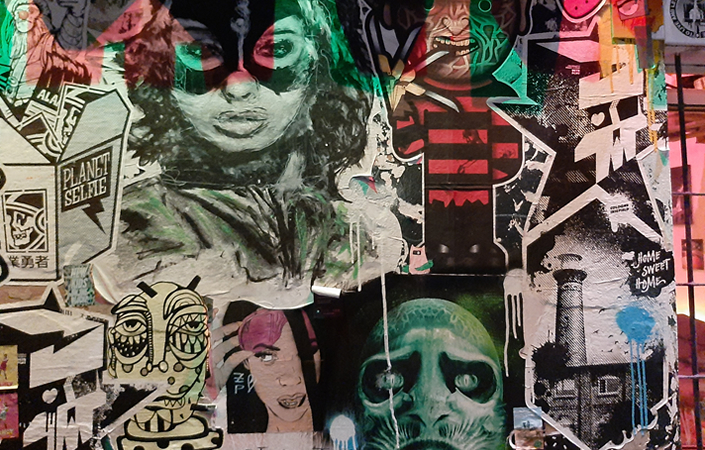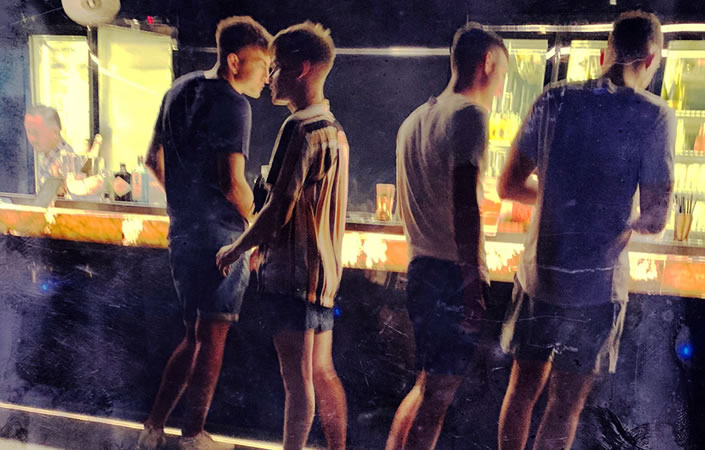15. September 2021

Almost all companies have, now quite some time ago, dealt with their values, often writing them down and distributing them throughout the company. A significant source was often the memory of the founders’ »philosophy« and their words, often late words. The values formed the backbone of the organization and complemented the vision processes. Guiding this was a quote from Odo Marquard: »The future needs origins«. Today, they are a foundation of the »Purpose« processes. It is always about the answer to the question: Who are we and who and how do we want to be?
Now these values, which are often understood as temporally stable, even supratemporal, are actually values of an old world. And so the question arises: Do we need a new value process? And should it this time be designed less top down and more with the inclusion of the socio-ecological environment?
Values, shared, are all the more important the more autonomy and self-control an organization strives for. They are an indispensable part of indirect control, giving the relatively freely operating units a common foundation and thus increasing the possibility of expanding degrees of freedom and reducing hierarchical, direct control.
The importance of new, participatory value processes can be clearly seen in the topic of diversity. In an attempt to increase the diversity of a company, we are designing inclusion programs today, and although we want the difference, the background logic is often »to fit in«. The contradictory message is: be different, but please be within our culture. So we want a discrimination-free coexistence in the context of our culture, culture of origin. If we really want to be a global company and truly a common house for »diversity«, the old values will have to undergo an intensive revision. This must be done in such a way that diversity is not merely thought of and included, but in such a way that a common identity of differences is formed.
New values emerging from the diverse collective could give members of other life concepts, other cultural origins and other life stories the opportunity to find themselves reflected in the values of their company. Then it would also be justified to speak of global companies and not only of globally represented companies.
SYNNECTA has described a process with TheQuestBySynnecta, which can be an important guide here.
Rüdiger Müngersdorff
29. January 2021

It is a well-known challenge: how can an organization gain and maintain a recognizable identity that gives direction to the conduct of its entire team? The history of large companies is usually shaped by mergers. Surprisingly, we often find deep-rooted and dominant origins identities there. These may reveal themselves even decades after a merger in people’s attitudes, in their decision-taking, and in the stories that are told. A deep-rooted sense of belonging and emotional ties to the identity of the existing, evolved community, on the other hand, are lacking. Such dynamics are not limited to companies that are shaped by mergers. It is apparent that companies are more and more fragmented. The periphery has gained importance. Different markets that demand different strategies support different self-attributions. The range of working methods is also expanding at speed: agile approaches demand various degrees of self-organization, and these bring with them a range of structures and means of performance as well as different expectations of that performance. There are cracks running through the sense of community that encompasses a company.
A decade ago, the answers that were found for these cracks included finding common values and formulating as well as intensively communicating a brand for the company. To this day, accordingly, such influence is administered via the internal modes of communication in waves: themes include values, leadership behaviour, compliance, as well as individual claims that are meant to describe an overarching identity. Sanctions and their mechanisms evolved at the same time, as is usual within the bureaucratic structures that we cannot escape.
Rhetorical purpose and a more vocal public have fostered the addition of claims that define the company as »good«: helpful and useful for society. At first, there was an easy acceptance that such an identity and its guiding role for personnel conduct would come from within the hierarchical structures. Nowadays, employees and other relevant stakeholders lay claim to their own contribution: they step beyond the boundaries of the company.
Looking at societies and how political communities form, we see that they have each had to confront that very same problem. The educational canon and the teaching of a common language have been central to these processes. While companies have comparable structures in their education and training departments, they only make limited use of the great potential that lies within them. A joint administrative infrastructure is often felt to be a mode of centralization, centring on the »corporate« structure. However, that and the education of elites are further measures that are used to design a common identity. The great festivals in companies go by such names as leadership meetings and company days. Whether they take place in person or in the virtual world: they serve more than anything the celebration of an emotionally designed identity that is created and experienced there. They are celebrations of a community – of »us«. Once this sense of identity has been fostered, however, it is often difficult to translate it into concrete modes of conduct and performance. That is the burden of bureaucratic work.
The peripheries are gaining increasing influence in shaping the steady development of identifiactions. Among other factors, that is due to the greater mobility of those who work on the peripheries of a company: their mode of life relates to reaching rather than keeping.
In short, we are witnessing a constant dynamic in the achievement and strengthening of company identities, using the same means as those by which national identities are formed. Accordingly, there is even now a desire for charismatic leadership, CEOs who visibly represent something and who are able to communicate that something emotionally. Even though our individual projections may differ, we are all looking in the same direction: towards the CEO. That creates our sense of community.
At the same time, however, the classic top-down approaches no longer suffice. Contribution is gaining weight and going beyond a mere »form of communication«. Dialogue is the only key to shaping the kinds of identity that are currently in demand, effective, and able to guide performance. Once again, the process is more important than a »printable« result. Important stakeholders include the entire workforce as well as the shareholders, the management, relevant representatives of the market and nowadays also of societies. It is an extremely challenging enterprise to put such a process of dialogue into action within a large global company. With »theQuestbySynnecta«, #Synnecta has developed models that can shape even expansive and diverse dialogues effectively. They even have a welcome and pleasing side effect: the inside-outside mode of thinking and decision-taking that still has a wide foothold is turned around (or turns itself around), guiding the companies into a new form of outside-inside thinking that is a critical marker of success in these new times of networking.
Rüdiger Müngersdorff
29. January 2021

How we see the world, and what we know about it, is shaped by what has gone before: it is conditional. The notion that our perception and understanding creates an image of the world has long been doubted. At least since the time of Kant, we have known that perception is shaped by a priori concepts, which include how we assess space and time within our perception as well as, for example, the role of causality in understanding. We shape our perception of reality, we do not make an image of it. Hermeneutics, the philosophy of language, has differentiated further the notion that we shape our perception and understanding. Psychology has revisited the epistemological analysis in addressing the meaning of our individual cognitive and emotional development for the way we perceive and understand an internal as well as an external reality, centring on the idea of repetition. This relates further to the works of cultural anthropologists and sociologists who first identified class-specific patterns in perception, understanding and action (the concept of mentality), in order to subsequently expand this to take in the construction of national patterns of perception and thinking. In our times, radical constructivism has addressed the conditions that shape our access to reality. It significantly influenced what we now define as »systemic«: one of the modern foundations of organizational development.
The introduction of the systemic approach has made it clear, among other things, that the structure of a chain of cause and effect can only provide a limited understanding of individual and collective perceptions, ways of thinking, emotional states and accordingly means of decision-taking and performance. Cause and effect works perfectly on all things that are consciously created and manufactured by humans, but is less powerful when it comes to actions set by individuals and collectives. These require an additional understanding of conditionality. That concept is not as clear-cut as the principle of cause and effect. There is not a single condition that lets us understand a particular mode of conduct. Once again, however, it is a concept that is not new: we find it in Buddhist thought, which may explain why an iterative way of working is so much more easily realized in the Asian context.
Mindset describes what used to be called culture in organizational development. Both terms have the advantage that they are highly unspecific and therefore applicable to a range of approaches. While there is always a marketing aspect to be borne in mind in the evolution of concepts in organizational development, we can nevertheless learn from recent analyses of culture and mindset. We construct our reality both individually and collectively from the viewpoint of our individual and collective habits, of where we have evolved from. In the concepts of radical constructivism that also includes functional adaptation. Our decisions and actions are therefore based individually as well as collectively on a priori concepts: they are shaped by what has come before our current reality.
The more recent work on mindset has the advantage that it concentrates more fully on methods that allow us to focus with greater awareness on some of these a priori concepts that shape us. It is a useful method to achieve reasonably fast results for our own conduct. In doing so, we tend to overemphasize our individual mindset in line with the modern credo that »I am the master of my perception, insight and action«. While it is useful to uphold this notion in order to sustain a subject that is autonomous in action, it also leads us to overlook the collective conditions that shape our perceptions, insights, emotions and eventually our decisions and actions. We need a clear awareness of the collective mindset and, going on from there, methodically expand on its significance. Otherwise, mindset work will remain a limited tool in organizational development.
With #Myndleap, #sisko #oudheusden #muengersdorff are zooming in on methodical work with collective mentalities – mindsets – that enables change. It is the only path to achieving sustainable profit for organizations.
The guiding principle was formulated by Ernst von Glasersfeld in 1987, based on the thesis that we establish the very world we perceive involuntarily because we do not pay attention to – and therefore obviously do not know – how we do so. It is a deeply unnecessary lack of awareness. Radical constructivism, similarly to the critique offered by Kant, states that we are largely able to tap into the ways by which we construct the world we experience. The resulting awareness in our operative actions (…) can help us change and maybe improve. (Ernst von Glasersfeld: Wissen, Sprache und Wirklichkeit, Braunschweig 1987).
The »maybe« that Glasersfeld inserted into his hopeful sentence makes it clear how much all that talk about a growth mindset simplifies matters. Where do we find hope? By individually and collectively becoming aware of the a priori concepts that mostly shape our perception, sensation, decision-taking and conduct subconsciously, we gain the freedom to do things differently.
Rüdiger Müngersdorff
Photo: Danny Lines by unsplash.com



